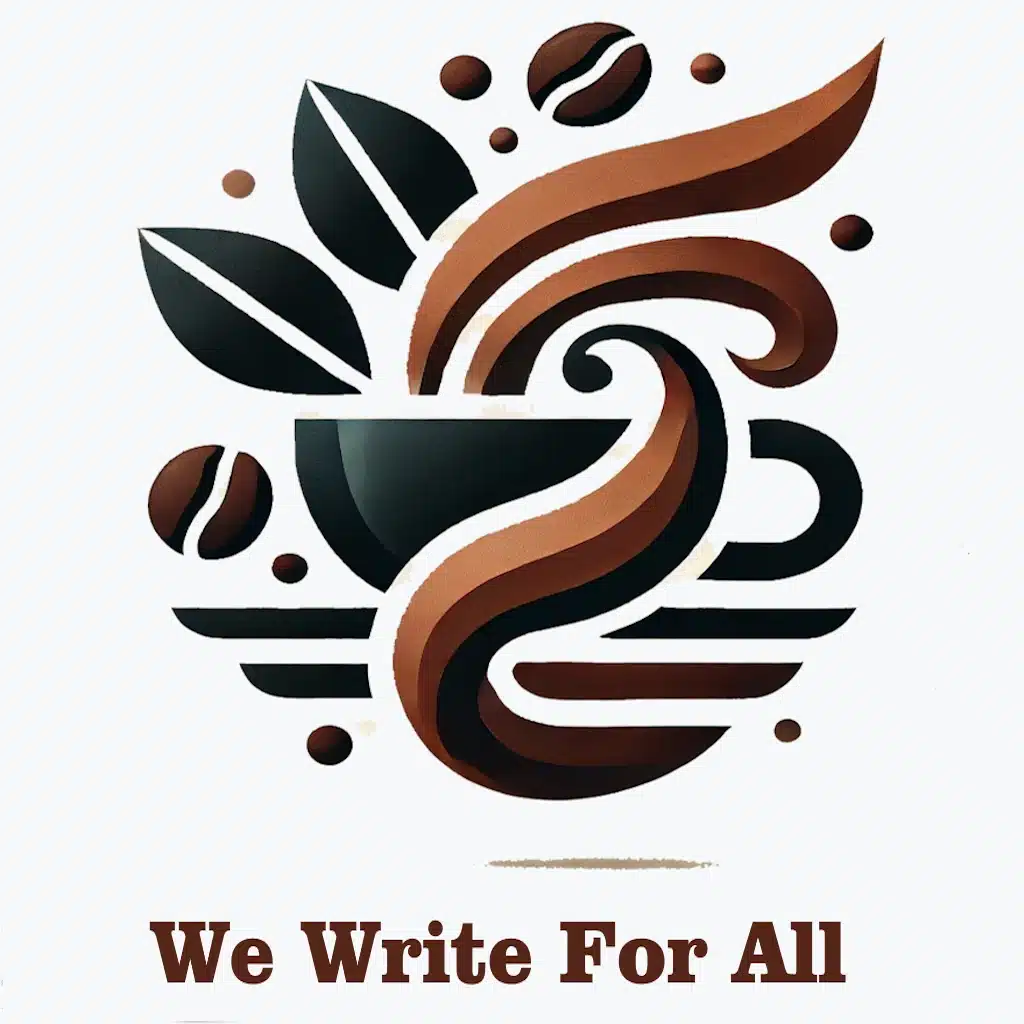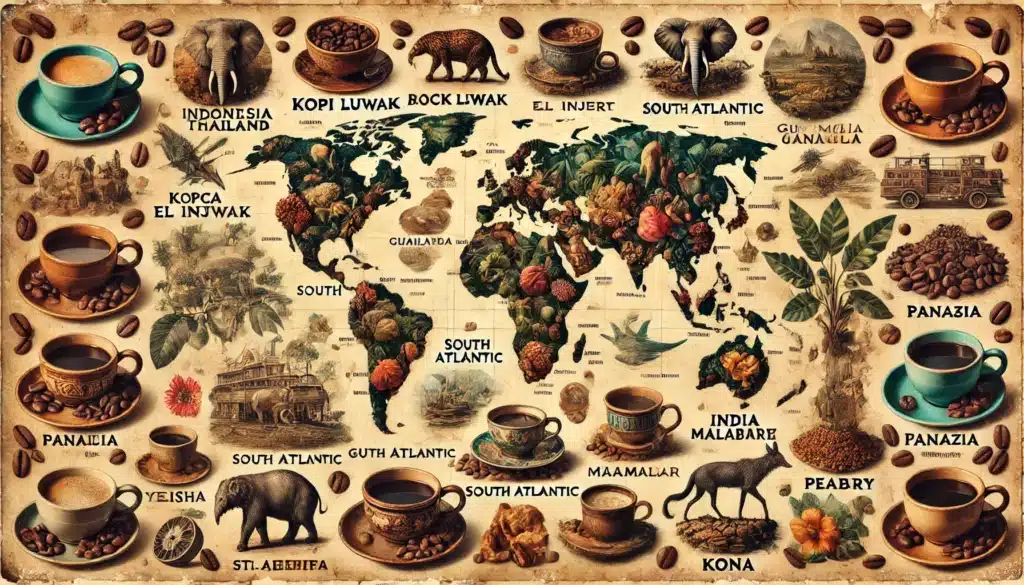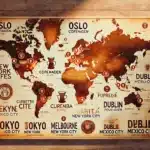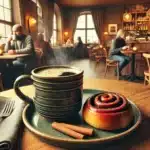Coffee is more than just a beverage — it’s an experience, a tradition, and for many, a passport to other cultures. While most of us are familiar with a classic espresso or a pour-over, there are some coffees around the world that break all expectations. From beans processed by animals to brews made with ancient techniques, here are ten of the most exotic coffees on the planet and where to find them.
1. Kopi Luwak – Indonesia
Perhaps the most controversial and famous of all exotic coffees, Kopi Luwak is made using beans that have passed through the digestive system of the Asian palm civet. The process supposedly enhances the flavor, producing a smooth, low-acidity cup.
You can find authentic, ethical versions of Kopi Luwak in small farms across Bali and Sumatra. However, be wary of commercial operations that exploit animals — always check the source.
2. Black Ivory Coffee – Thailand
This rare coffee is made by feeding Arabica cherries to elephants. The beans are naturally fermented in the elephant’s stomach and then collected from their waste. The process results in a delicate, chocolatey brew with earthy undertones.
Black Ivory Coffee is primarily produced in Northern Thailand and is one of the most expensive coffees in the world due to its labor-intensive process.
3. Finca El Injerto – Guatemala
Grown in the highlands of Huehuetenango, this micro-lot coffee is one of the most award-winning beans in Central America. It’s known for its complex flavor profile — bright acidity, floral notes, and a silky finish.
Finca El Injerto has its own farm-to-cup experience where visitors can explore the estate, learn about the washing and fermentation process, and taste the coffee on site.
4. St. Helena Coffee – South Atlantic Ocean
Yes, you read that right. This coffee is grown on the remote island of St. Helena, located in the middle of the South Atlantic Ocean. The volcanic soil and sea breeze give the beans a unique character — light body, mild acidity, and hints of caramel and citrus.
Due to its limited production and location, this coffee is a rare treat. You can buy it online or from specialty roasters in the UK.
5. Yirgacheffe Coffee – Ethiopia
Ethiopia is considered the birthplace of coffee, and Yirgacheffe is its crown jewel. Grown at high altitudes, these beans are often naturally processed and have a fruity, tea-like profile with notes of bergamot and jasmine.
To taste Yirgacheffe at its best, visit the coffee ceremonies in Addis Ababa or the farms in the Sidamo region, where locals serve it with popcorn and incense.
6. Panama Geisha – Panama
This coffee broke auction records for its price per pound. Originally from Ethiopia, the Geisha varietal thrives in Panama’s Boquete region, where volcanic soil and microclimates give it a floral, almost perfumed aroma and a bright, complex taste.
It’s best experienced at origin, on a farm like Hacienda La Esmeralda, where tastings include side-by-side comparisons of different processing methods.
7. Jacu Bird Coffee – Brazil
Much like Kopi Luwak and Black Ivory, Jacu Bird Coffee is produced by feeding beans to a native bird species in Brazil. Unlike the civet or elephant, the Jacu bird is wild and only eats ripe cherries, contributing to the coffee’s clean, nutty flavor.
You’ll find this rare coffee at Espírito Santo estates, and some high-end cafés in São Paulo or Rio.
8. Monsoon Malabar – India
This Indian coffee undergoes a unique aging process. Beans are exposed to monsoon winds and rains, which swell and mellow them, creating a low-acid, full-bodied cup with earthy tones.
It’s widely used in espresso blends and best enjoyed in coastal towns like Mangalore or at Indian Coffee Houses across the country.
9. Peaberry Coffee – Tanzania
Peaberries are coffee beans that develop as a single rounded seed instead of two halves. These rare beans are hand-sorted and roasted separately, offering a sweeter, more concentrated flavor.
Tanzanian Peaberry is often found near Mount Kilimanjaro and can be tasted in Arusha or Moshi, usually brewed as a pour-over or siphon.
10. Hawaiian Kona Coffee – Hawaii, USA
Kona coffee is grown on the volcanic slopes of Hualālai and Mauna Loa. The unique climate — sunny mornings, rainy afternoons, and cool nights — creates beans with a smooth, nutty taste and hints of citrus and spice.
Visit the Kona Coffee Belt in Hawaii for farm tours, tastings, and even festivals celebrating this iconic coffee.
Where to Try These Coffees Without Traveling
If hopping on a plane isn’t an option, many of these exotic coffees are available through specialty roasters online. Companies like Sweet Maria’s, Blue Bottle, and Tandem Coffee Roasters often carry limited releases of rare beans.
However, keep in mind that freshness and roasting date matter — look for roasters that ship shortly after roasting and provide details about the farm or lot.
How to Brew Exotic Coffees at Home
Each exotic coffee deserves a brewing method that highlights its strengths. A few suggestions:
- Geisha, Yirgacheffe, Kona – Use a pour-over (Hario V60 or Chemex) to highlight clarity and floral notes
- Monsoon Malabar, Peaberry, Jacu – Try French press or espresso to bring out the boldness
- Kopi Luwak, Black Ivory – Use an AeroPress or siphon brewer to retain their rare characteristics
Water quality, grind size, and precise temperature control all make a difference when handling premium beans.
Ethical Concerns and Sustainability
Some exotic coffees, especially animal-processed ones, raise ethical questions. In many regions, animals are caged and mistreated to meet demand. Always look for certifications, transparent sourcing, and small-scale producers who prioritize welfare and sustainability.
Additionally, many of these rare beans grow in areas affected by climate change. Supporting responsible farming ensures both quality and environmental care.
Final Thoughts: A Journey Through Taste and Culture
Exotic coffees are more than a novelty — they’re a gateway to cultures, traditions, and landscapes often hidden from the mainstream coffee world. Whether you’re sipping fermented elephant beans in Thailand or delicate Geisha in Panama, each cup tells a story.
Let your taste buds travel, and you may discover more than just a new favorite brew — you might find a deeper connection to the people and places behind the bean.







